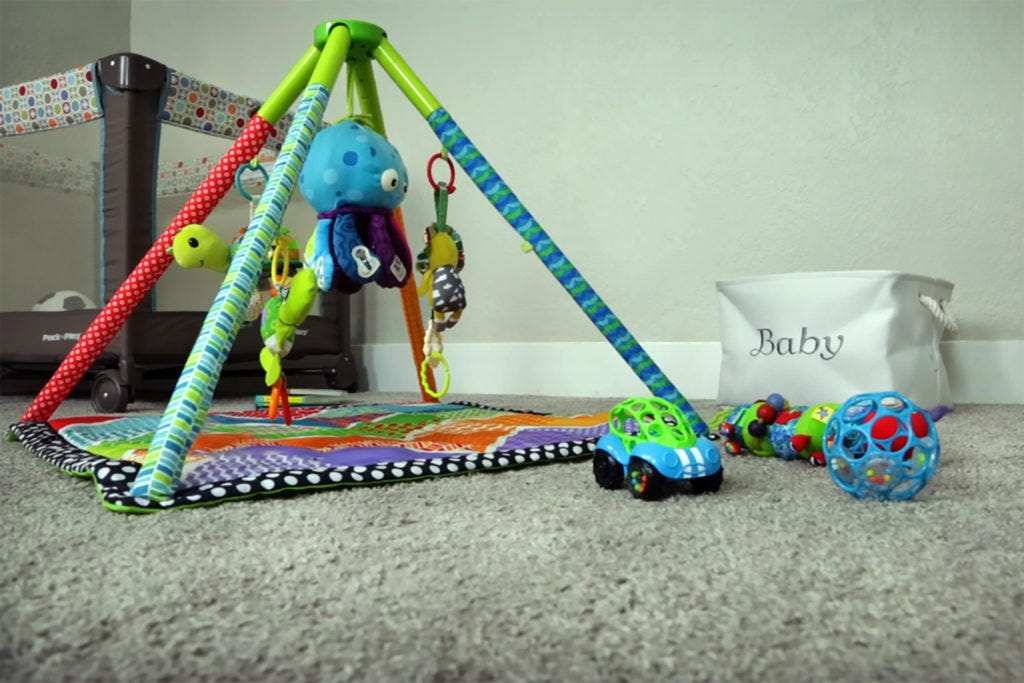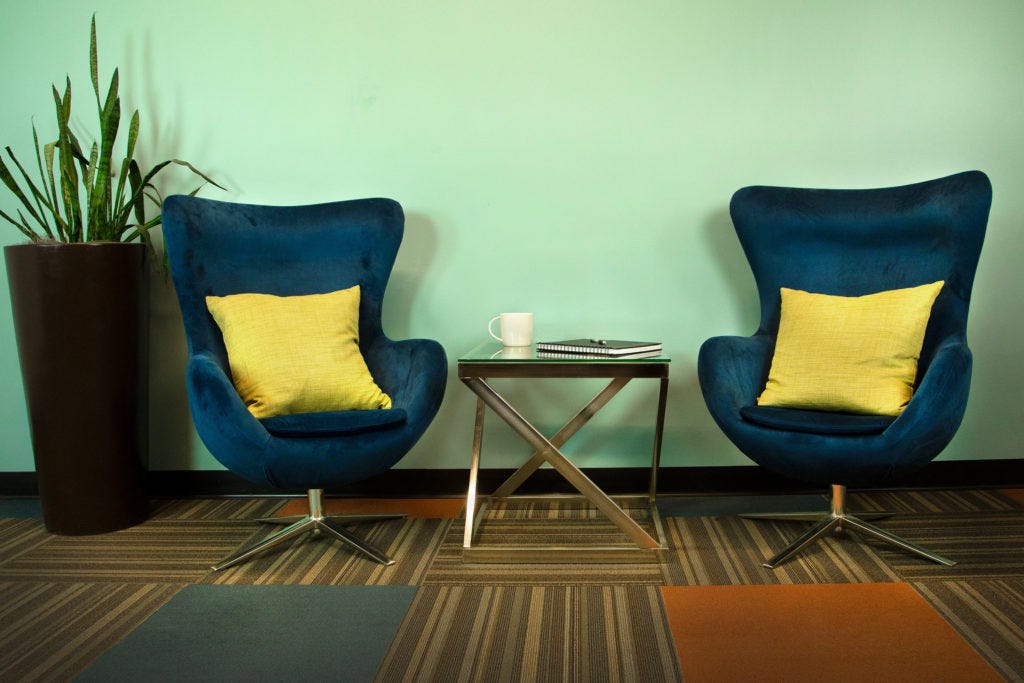
Can you install rubber gym flooring over carpet? This seems to be the million dollar question in the gym flooring world. Find out whether gym flooring will work over your carpet and how to go about the installation process.
So, you're ready to create your own home gym? It's super exciting, but it can also be really confusing.
If you have hard surfaces like wood, tile, vinyl, laminate, etc., it's easy to figure out what to do with your floor. You just lay some rubber or foam gym flooring on top and, voila! you've got yourself a gym floor. But if you have carpet...? That's a horse of a different color. ( <--name that movie!)
Carpet can be tricky. Especially if you're set on keeping your carpet. It can add a whole new level to your building and installation process.
This is the type of thing you don't normally think about until you're ready to hit purchase and then it's like "Oh man! What am I going to do about my carpet?!" A flurry of google searches later, you can end up even more confused than when you started.
So...can you install rubber gym flooring over carpet?
You're going to love my answer.
It depends.
I know, I know, but let me explain!
Related content >> 5 Options for Home Gym Flooring
If You Have Plush Carpet

This is the first question we need to answer. Is your carpet short and flat like a commercial carpet? Or is it soft, squishy and plush like walking on a cloud?
While plush carpet is often ideal for bedrooms because it adds that extra comfort, it is not ideal for gym flooring. Not even a little bit.
If you want to install gym flooring and have this softer, high pile carpet, you pretty much have two options.
Related content >> Home Gym Flooring Buyer's Guide
Rip Out That Carpet
I know, this is probably what you were trying to avoid. The truth is, this is going to be your easiest and least expensive option.
It's just not a good idea to put rubber tiles, rolls or even mats directly over your soft carpet. It's not stable and you could seriously injure yourself. Imagine lifting weights on a wobbly surface, or running on a treadmill with a wobbly subfloor. That is a recipe for disaster.
Because the floor is so uneven and unstable, rubber tiles will come apart at the seams and rubber rolls will lift, move and ripple.
Not to mention, your carpet isn't really meant for this type of activity. Laying heavy rubber on top and then adding in weights, exercise, etc. will smush and flatten your carpet unevenly. While carpet can return to its normal thickness after being flattened (it does usually come in rolls), you're not evenly distributing the weight, you will likely end up with a lumpy carpet.
The good news is, carpet is really easy to rip out yourself. I did it in my remodel and I am the least handy person I know. Once you rip out the carpeting, you can easily install your perfect gym flooring on the nice sturdy subfloor.
Use Plywood Between the Carpet and Rubber

If you're living in a rental and you can't alter the space or if you're 100% set on keeping your plush carpet, there is still an option! You can use plywood to create a subfloor on top of your carpet.
This is basically like building a giant platform. It will work great and protect both your carpet and your body. And to be fair, it's not that much more difficult or expensive. It's just an extra step.
Plywood typically costs around $0.50/sqft, about $50 for a 10'x10' home gym.
Of course, this also adds more time and energy to your project, but it can be well worth it if you want a home gym but can't ditch your carpet.
Related content >> Home Gym: Foam vs. Rubber
If You Have Flat, Low Pile / Berber Carpet

Good news! The answer is a big, fat YES you can! And easily.
How to Install Rubber Over Carpet
First of all, check to make sure your carpet really is low pile. Try putting something on top and standing on it - it should feel solid and sturdy. Now, there are a few options, depending on how much you care about keeping the carpet intact.
If You Don't Care About the Carpet

We hear this all the time. You don't really care about your carpet, but you don't want to deal with ripping it up.
In that case, you can lay the gym flooring of your choice right over top. No preparation necessary. If you'd like, you can use double-sided carpet tape along the edges to make sure you keep the floor in place, but honestly, it's not usually necessary. Additionally, you can glue down, but some of the glue will absorb into the carpet and it won't work quite as well.
Just follow the typical installation instructions for your particular gym flooring and it will be no different than installing over a hard surface.
Related content >> Home Gym Flooring for Your Budget
If You Want to Keep Your Carpet
If you're renting, using a temporary gym flooring or just not sure you're ready to give up on that carpet yet, not to worry! We can help you protect it.
If you're not planning on using any sort of adhesive, you can easily lay the rubber directly down on the carpet with no extra precautions. The only negative here is if you have a light colored carpet, the rubber will make it look dirty. But good news! Any dirt/color from the rubber will come out easily with a traditional carpet cleaning.
If you want to use glue or tape (this is not necessary in most cases) or you don't want to worry about cleaning your carpet, you can always just lay a big sheet of plastic between your carpet and rubber. Make sure the plastic is cut to fit the size of your room - you don't want a bunch of extra material.
Once you lay your plastic, you can still loose lay your rubber. Or, you can use double-sided carpet tape to secure the edges.
Related content >> Rubber Flooring: 5 Myths Busted
The Best Gym Floors to Use Over Carpet
You can really use any gym flooring over your carpet as long as you follow the above instructions. But if you're still not sure what to get, here are a few of our most popular home gym flooring options.








Since the workout area won’t cover the entire room, would you recommend using mats or tiles? What thickness mats/tiles do you recommend? Do they have to be taped or glued to the plywood? It seems that 1-inch tiles will interlock better, but I am worried about a high lip with the combined height of the plywood and rubber at the border of the workout area which may be a tripping hazard.
Thanks for reaching out, this sounds like a great project. To help out, I outlined some information below!
1. 1/4" plywood is plenty thick and will support your home gym flooring.
2. For a general use gym, based on the size of your space, I recommend 8mm Strong Rubber tiles since they are easy to build upon if you want to expand your home gym. However, rubber mats are also an excellent home gym flooring option.
3. Neither tape nor glue is required when installing rubber flooring over plywood, as the floor will stay put under its own weight.
4. To compensate for the potential high lip after installation, try using a <a href="https://www.rubberflooringinc.com/accessories/trim-and-molding/transition-strips.html" target="_blank" rel="noopener nofollow ugc">rubber ramp</a> to transition your gym floor to the carpet to minimize trip hazards.
I hope this information helps and I wish you luck building your home gym! If you have any other questions, please feel free to reach out.
Thanks so much for reaching out. When installing rubber floors over high pile carpet, the best option would be <a href="https://www.rubberflooringinc.com/interlocking-tile/1-monster-rubber-tile.html" target="_blank" rel="noopener nofollow ugc">Monster Rubber Tiles</a>. However, any rubber tile flooring that is 1" or thicker works due to how they interlock together.
You can order <a href="https://www.rubberflooringinc.com/samplerequest.aspx" target="_blank" rel="noopener nofollow ugc">free samples</a> at any time to see if this floor works for your home gym here: https://www.rubberflooringinc.com/samplerequest.aspx
I hope this information helps, and good luck on your home gym project. Please let us know if you have any other questions.
Thank you for your question. Large <a href="https://www.rubberflooringinc.com/rubber-tiles.html" target="_blank" rel="noopener nofollow ugc">rubber tiles</a> will absolutely work over a carpeted area. There are also large <a href="https://www.rubberflooringinc.com/mats/index.html" target="_blank" rel="noopener nofollow ugc">rubber mats</a> that can be used over carpet that would work great under exercise equipment. If you have any other questions, don't hesitate to reach out and we will happily help.
You can add an underlay under the rubber flooring if you want. However, if you just need some added cushion, I would suggest using a softer roll on top of the flooring. Here are a few good options for you to consider.
Impact Rolls: https://www.rubberflooringinc.com/rubber-roll/pre-cut-plyorobics-roll.html
Eco Flec Rolls: https://www.rubberflooringinc.com/rubber-roll/custom-cut-eco-flec-roll.html
Regrind Rolls - Black: https://www.rubberflooringinc.com/rubber-roll/pre-cut-regrind-roll.html
15mm Impact Rolls: https://www.rubberflooringinc.com/rubber-roll/15mm-plyo-rolls-designer-series.html
Impact Rolls - Wood Series: https://www.rubberflooringinc.com/vinyl-roll/plyorobic-rolls-wood-series.html
I hope this helps! Please reach out if you have any other questions.
Thanks for your question! The ideal thickness of the plywood depends on a few factors. You don't want it to be so thin that it doesn't offer a lot of support to the gym flooring, but if it's too thick, the flooring might not fit under your doorframe. You want a happy medium, so I suggest you measure your space to find out how thick the plywood can be when added to the thickness of the flooring you want.
I hope this answers your question. Please reach out if you need anything else!